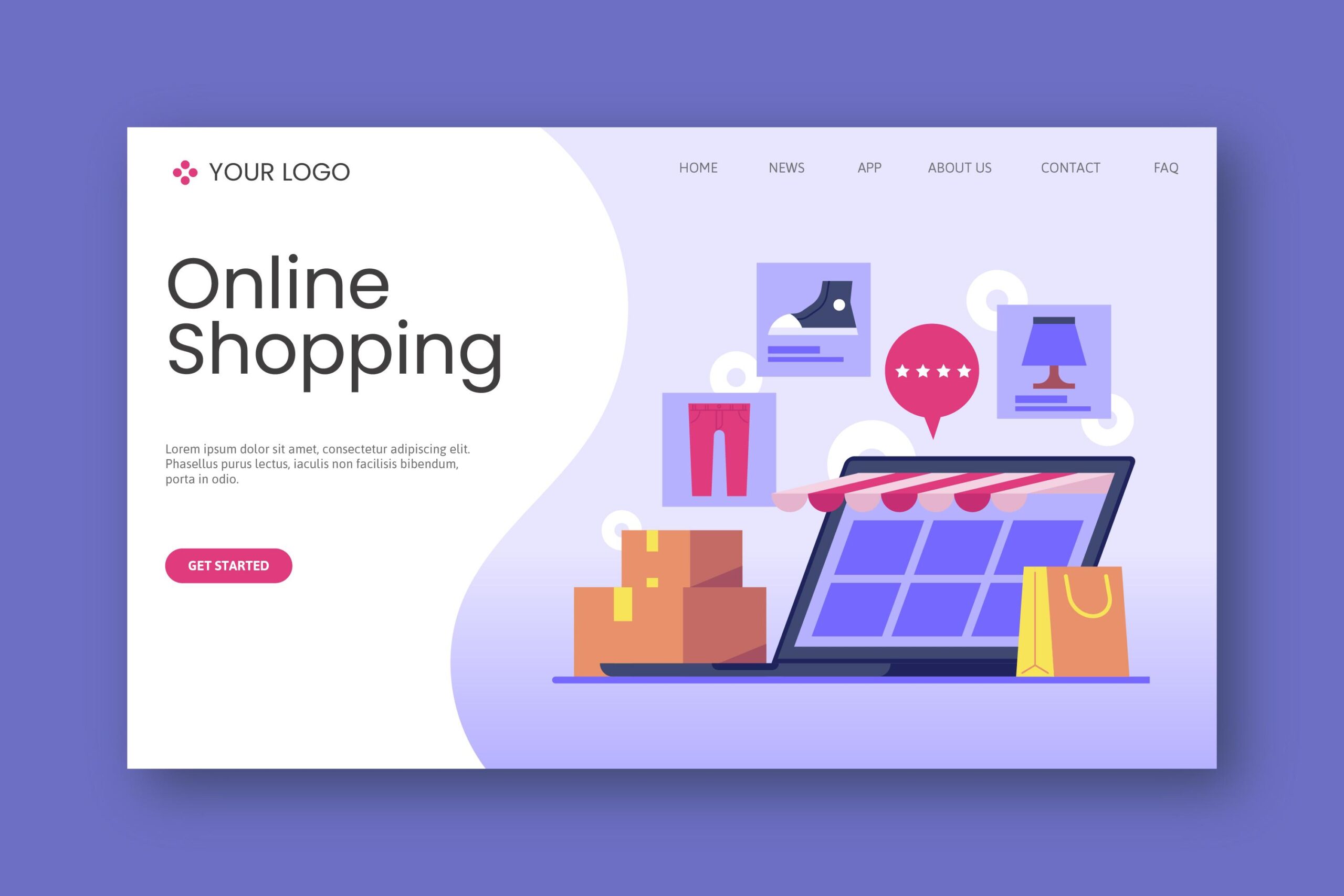If you’re looking to build an e-commerce website without the monthly fees of platforms like Shopify, WordPress and WooCommerce are excellent alternatives. This powerful combination lets you create a professional online store with complete control over your website and costs. In this guide, we’ll walk you through setting up a WordPress website and integrating WooCommerce so you can sell products online.
Why WordPress + WooCommerce?
WordPress is one of the most popular websites due to its flexibility and ease of use. WooCommerce is a WordPress plugin that adds ecommerce functionality, allowing you to sell physical and digital products, accept payments, and manage inventory. With this setup, you have full control over your site without the high fees often associated with other ecommerce platforms.
Step 1: Get Hosting with Hostinger
The first step in building your ecommerce site is choosing a reliable hosting provider. We recommend Hostinger for its affordability, speed, and ease of use. Hostinger offers hosting plans specifically optimized for WordPress, which ensures your site runs smoothly.
Starting from $2.99/month
Discount Code: MYFIRSTWEBSITE
Key Features
Extremely affordable
User-friendly control panel
LiteSpeed Cache for faster loading times
Why We Recommend It
Storage and Bandwidth:
30 GB SSD storage
100 GB bandwidth
Extras:
Free SSL certificate
Pros & Cons
- Low starting price
- Good performance for the price
- No free domain in the lowest-tier plan
- Support can be slow during peak times
How to Get the Best Discount:
- Visit Hostinger’s website and choose a hosting plan. We recommend the WordPress Starter plan, which provides plenty of resources for an ecommerce store.
- Use a ‘MYFIRSTWEBSITE’ coupon code during checkout for a discount to save even more. Hostinger often offers significant discounts for new users.
Once you’ve chosen your plan and completed the signup process, installing WordPress is time.
Step 2: Set Up WordPress
After signing up for Hostinger, you’ll be able to install WordPress directly from their control panel. Here’s how to do it:
Steps to Install WordPress:
- Log in to Hostinger and go to the control panel (hPanel).
- Under the Website section, select Auto Installer.
- Choose WordPress as your preferred website builder.
- Enter your domain name, admin username, and password, then click Install.
Hostinger will automatically set up your WordPress website. Once installed, you can access your WordPress dashboard by typing yourdomain.com/wp-admin in your browser.
Step 3: Choose a Theme
One of the best things about WordPress is the wide selection of themes available. A theme controls how your website looks and feels, and there are plenty of e-commerce-focused themes.
How to Pick a Theme:
- In your WordPress dashboard, go to Appearance > Themes.
- Click on Add New and browse for themes. You can search for ecommerce or WooCommerce themes.
- Once you find a theme you like, click Install, then Activate.
Many themes come with pre-built website templates for online stores, so you don’t have to start from scratch. Simply customize the template to match your brand.
Step 4: Install WooCommerce
With your WordPress site set up, it’s time to add the WooCommerce plugin. WooCommerce is what will turn your WordPress site into a full-featured online store.
Steps to Install WooCommerce:
- In your WordPress dashboard, go to Plugins > Add New.
- Search for WooCommerce.
- Click Install Now, then Activate.
Once WooCommerce is installed, you’ll be guided through the setup wizard, which helps you configure your store.
Step 5: Set Up WooCommerce
The WooCommerce setup wizard will ask for some basic information about your store. Here’s what you need to do:
- Store Details: Enter your store name, address, and currency.
- Product Types: Select the products you plan to sell (physical, digital, or both).
- Payment Options: Choose how you want to accept payments. WooCommerce integrates with Stripe and PayPal, but we recommend starting with Stripe for simplicity. You’ll be prompted to connect your existing Stripe account or create a new one.
- Shipping Options: Set up shipping rates and zones based on where you’ll ship your products.
Once these settings are in place, your WooCommerce store will be ready!
Step 6: Add Your First Product
Now that your store is set up, it’s time to add your first product. WooCommerce makes this easy, and with the help of AI tools, you can generate product descriptions quickly.
How to Add a Product:
- In your WordPress dashboard, go to Products > Add New.
- Enter your product name and description. You can use WooCommerce’s built-in AI tool to generate descriptions if needed.
- Set the price for your product in the pricing field.
- Upload product images by clicking Set Product Image and choosing files from your computer.
- Scroll to the Product Data section to configure the product type, SKU, stock quantity, and shipping information.
- Once you’ve filled out all the necessary fields, click Publish to make your product live on your site.
Repeat this process to add as many products as you need.
Step 7: Customize Your Store
WooCommerce offers plenty of customization options to make your store unique. You can adjust the layout, product categories, and checkout process.
Key Customization Options:
- Appearance > Customize: Use the WordPress customizer to tweak your site’s design, including colors, fonts, and layout.
- WooCommerce > Settings: Configure additional settings like tax rates, shipping methods, and inventory management.
It’s important to make your store look and function exactly how you want it.
Step 8: Set Up Essential Plugins
To improve your WooCommerce store, there are a few essential plugins you might want to consider. These plugins add extra features that help improve your store’s functionality.
Recommended Plugins:
- Yoast SEO: Helps optimize your products and pages for search engines, driving more traffic to your store.
- WooCommerce Payments: Allows you to accept more payment methods directly on your website.
- WooCommerce Shipping & Tax: Automatically calculates tax rates and integrates shipping options based on the customer’s location.
Installing these plugins is as easy as going to Plugins > Add New, searching for the plugin, and clicking Install Now.
Step 9: Test Your Store
Before you officially launch your ecommerce website, testing everything to ensure it works smoothly is crucial. Here’s what you should test:
- Product Pages: Make sure all products are displayed correctly, with accurate prices and descriptions.
- Add to Cart: Test the shopping cart functionality to ensure customers can add and remove products easily.
- Checkout Process: Complete a test purchase to make sure payments are processed correctly through Stripe.
- Mobile Responsiveness: Check how your website looks and functions on mobile devices, as many customers will shop using their phones.
By testing thoroughly, you can catch any potential issues before your customers do.
Step 10: Launch Your Store
Once you’re confident everything is set up and tested, launching your store is time. Promote your store on social media, start an email marketing campaign, and use SEO strategies to attract customers.
Additional Promotion Tips:
- Social Media: Share your products on platforms like Instagram, Facebook, and Pinterest.
- SEO: Use an SEO plugin like Yoast SEO to optimize your product pages for search engines.
- Email Marketing: Collect email addresses from visitors and send promotional emails to drive traffic back to your store.
Conclusion
Building an ecommerce website with WordPress and WooCommerce gives you the flexibility and control to create a store that suits your needs. Unlike Shopify, which charges monthly fees, WooCommerce is free, making it a cost-effective solution for selling products online.
Following this step-by-step guide will keep your online store up and running in no time. The process is straightforward and easy to follow, from choosing a hosting provider like Hostinger to setting up WooCommerce and adding your first product. So, what are you waiting for? Start building your ecommerce business today and enjoy the benefits of owning your online store!





